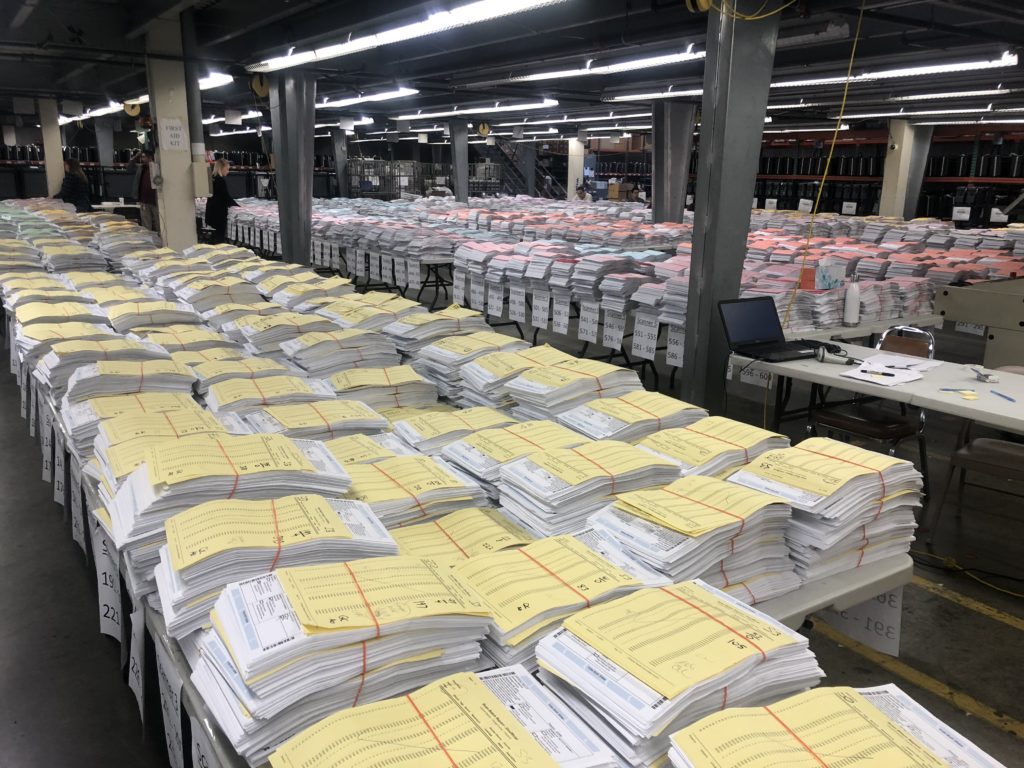In order to run trustworthy elections using hackable computers (including hackable voting machines), “elections should be conducted with human-readable paper ballots. … States should mandate risk-limiting audits prior to the certification of election results.”
What is a risk-limiting audit, and how do you perform one? An RLA is a human inspection of a random sample of the paper ballots (or batches of ballots)—using a scientific method that guarantees with high confidence that if the voting machines claimed the wrong winner, then the audit will declare, “I cannot confirm this election,” in which case a by-hand recount is appropriate. This is protection against voting-machine miscalibration, or against fraudulent hacks of the voting machines.
That’s what it is, but how do you do it? RLAs require not only a statistical design, but a practical plan for selecting hundreds of ballots from among millions of sheets of paper. It’s an administrative process as much as it is an algorithm.
In 2018, RLAs were performed by the state of Colorado. In addition, two just-published reports describe pilot RLAs performed by Orange County, California and Fairfax, Virginia. From these reports (and from the audits they describe) we can learn a lot about how RLAs work in practice.
Orange County, CA Pilot Risk-Limiting Audit, by Stephanie Singer and Neal McBurnett, Verified Voting Foundation, December 2018.
Neal Kelley, Registrar of Voters of Orange County, ran an RLA of 3 county-wide races in the June 2018 primary, with assistance from Verified Voting. About 635,000 ballots were cast; many ballots were 3 pages long (printed both sides), about 1.4 million sheets overall. Of these, just 160 specific (randomly selected) ballot sheets needed to be found and tabulated by human inspection. How do you manage a million sheets of paper?

Orange County elections warehouse during the June 2018 risk-limiting audit
Like this! Keep well organized ballot manifests that list each batch of ballots (that were initially counted by optical scanners), where they came from, how many ballots. How do you know how many ballots are in each batch? The optical scanners tell you, but you don’t want to trust the optical scanners (a hacked scanner could influence the audit by lying about how many ballots are in a batch). So you weigh the batch on a high-precision scale, that tells you ±2 sheets. And so on. You can read the details in the report, which really helps to demystify the process. Still, there are many ways of doing an RLA, and this report describes just one of them. The audit was finished before the deadline for certifying election results. The estimated salary cost of the staff of the Registrar of Voters, for the days running the audit, was under $4000.
City of Fairfax,VA Pilot Risk-Limiting Audit, by Mark Lindeman, Verified Voting Foundation, December 2018.
Brenda Cabrera, General Registrar of the City of Fairfax, ran a pilot RLA of the June 12th 2018 Republican primary Senate election, with assistance from Verified Voting. There were 948 ballots cast, and the audit team ran the audit three ways, to test three different RLA methods. The audit was scheduled to take two days but finished ahead of schedule.
Colorado ran statewide RLAs of its 2018 primary and general elections, after pilot projects in previous years.
From all these activities we continue to learn more about how to run trustworthy elections. I encourage state and local election officials nationwide to try RLA pilots of their own. The Verified Voting Foundation, Democracy Works, the Democracy Fund, Free and Fair, and other individuals and organizations are available to provide advice.
